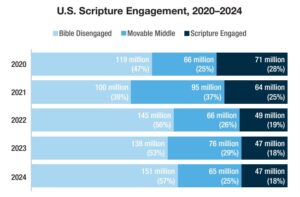
WASHINGTON (BP)–The legislative ban on partial-birth abortion has struck an impediment on the way to the White House.
Senate opponents of the bill are maneuvering to block passage or to include an amendment offensive to supporters in the final version of the Partial-birth Abortion Ban Act. Sens. Barbara Boxer, D.-Calif., and Tom Harkin, D.-Iowa, are leading an effort to kill the bill or to affirm legalized abortion in the final version, according to Roll Call, a Capitol Hill newspaper.
Six weeks after the House of Representatives overwhelmingly approved the ban, the measure still has not gone to a conference committee to report out a final bill. The House version approved June 4 did not include an amendment the Senate incorporated into its bill passed in March.
Senators had attached to their version a nonbonding resolution affirming the 1973 Roe v. Wade decision in which the Supreme Court legalized abortion nationwide. That resolution, offered by Harkin, expressed the Senate’s belief that Roe v. Wade “was appropriate and secures an important constitutional right,” and should not be reversed.
When House and Senate bills have differences, a conference committee of members from both houses is appointed to negotiate a final measure. The House has appointed its conferees, but the Senate has not, Roll Call reported.
While Boxer and Harkin would like to prevent final passage of the bill, they also would accept a ban that affirms Roe v. Wade.
“I want to make a stand in favor of Roe,” Boxer said, according to Roll Call. “I have no intention of filibustering. But if we keep Roe in, we might be able to stop this bill.” A filibuster is a legislative tactic designed to kill a bill through delay. It requires 60 votes to invoke cloture and end a filibuster.
At least some House pro-life members, however, have signaled they are unwilling to compromise in order to enact a ban on the grisly abortion procedure.
“Even in a sense of the Congress resolution that is non-binding, you’re asking me to vote for something that’s egregious to me,” Rep. Lee Terry, R.-Neb., said, according to Roll Call. Including the Roe language would “basically send a message to the Supreme Court that’s the opposite of the message we’re trying to send,” he said.
President Bush supports the ban, but there has been no indication if he would sign it into law if it included the Roe resolution.
The legislation would prohibit an abortion method that normally consists of the delivery of an intact baby feet first until only the head is left in the birth canal. The doctor pierces the base of the baby’s skull with surgical scissors, then inserts a catheter into the opening and suctions out the brain. This typically occurs during the fifth or sixth month of pregnancy.
The House approved the ban with a 282-139 vote, while the Senate passed it 64-33. The Senate vote for the Roe resolution was 52-46, with nine Republicans joining 42 Democrats and an independent in the majority.
If it becomes law, the ban will mark the first time Congress has restricted a particular method since abortion was legalized by the Supreme Court in the Roe decision. Roe, combined with the Doe v. Bolton ruling released at the same time, had the effect of legalizing abortion throughout all stages of pregnancy for unlimited reasons.
Abortion-rights organizations, such as Planned Parenthood Federation of America and the National Abortion Federation, have promised to go to court to seek to block enforcement of the ban if it is signed into law.
It is likely the Supreme Court will make the final determination on the measure’s legality if it becomes law. In 2000, the high court overturned a state law patterned after a federal ban approved by Congress but vetoed by President Clinton. The justices voted 5-4 to strike down a Nebraska ban on partial-birth abortion in its Stenberg v. Carhart opinion. The Nebraska measure was one of 27 state laws patterned after the federal legislation.
Congressional supporters of the ban drafted a new version that sought to address the court’s contention the Nebraska law could have been interpreted to cover other abortion methods, as well as the justices’ declaration the ban needed an exception for maternal health reasons. The bill provides more specific language on the procedure it seeks to prohibit. It also declares in its findings the method is neither safe for women nor necessary to preserve their health. It includes an exception to protect the mother’s life.
If enacted, the ban would become federal law after eight years of effort. Congress twice adopted partial-birth abortion bans in the 1990s only to have Clinton veto them both times. In both 1996 and 1998, the House achieved the two-thirds majorities necessary to override Clinton’s vetoes, but the Senate fell short.
The Southern Baptist Convention approved resolutions condemning the procedure in both 1996 and 2002. Last year, messengers easily passed a proposal from the floor calling for Bush to make enactment of a ban on the method a high priority.
–30–













